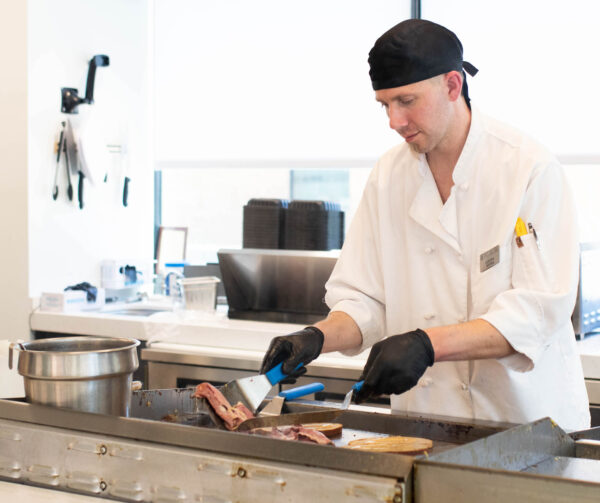Opinion: USU Dining Services is here for you
Multiple factors play into students getting a daily meal, such as finances, transportation and time. From SNAC, or the Student Nutrition Access Center, to USU Dining Services, food at Utah State University is accessible and affordable, but each student’s needs are different and should make their food decisions based on their current situation.
Alan Anderson is the executive director of Dining Services. He has spent the past 30 years working at USU with students’ best interest in mind. He said there are multiple factors that go into the decisions for on-campus dining and for what students should consider when purchasing meal plans.
On first glance, the prices seem confusing for why they are the way there are and why they change from year to year.
Anderson explained why there are certain changes such as a more than 15% change of price in meal plans. Dining Services operates as a nonprofit organization. Any money gained goes back into it for new equipment and repairs. Having raised employee wages from $7.25 to $10 per hour has cost them hundreds of thousands of dollars in one year alone. Accommodating to a change as great as that brings a challenge to budgeting.
 Bailey Rigby
Bailey Rigby Head Chef Rob Simonson prepares food for customers at Beth’s Bistro, a popular dining location on USU’s campus.
Other factors such as yearly inflation rates, as well as how the pandemic affected business performances also caused the spike in costs. Meal plan prices are also set a year in advance, making it difficult to gauge appropriate prices.
Dining Services also covers catering to student events, which is their biggest expense. The Utah State University Student Association constantly puts events on for students and they are a great way to save money with the free food they offer.
Another way to save money on campus dining is by using Aggie Express, where students save 10% on purchases made at dining locations, including sporting event concessions. The money transfers semester to semester and is good for students without meal plans or Dining Dollars.
Compared to other Utah universities’ unlimited and boxed meal plans, USU has arguably the most affordable ones. With more than a dozen dining options on campus for Dining Dollars and Aggie Express, students are not limited on food options.
However, no matter how inexpensive dining plans are, every student’s financial situation is different, but there are resources available to accommodate to students, such as SNAC.
The food itself comes from Cache Community Food Pantry, Utah Food Bank, Student Organic Farm, as well as unsold food from USU Dining Services. This eliminates food waste and provides students with food insecurity quick access to nutritional food.
Kara Bachman, the Food Security Program coordinator at SNAC, said there are multiple resources available for students with food insecurity and other financial deficit.
“SNAC is here to help any Aggie who’s experiencing difficulty accessing enough nutritious food,” Bachman said.
Bachman is always looking to help qualifying students gain access to the Supplemental Nutrition Assitance Program, or SNAP, benefits as well as students needing assistance with housing, child care, insurance and other basic needs.
Bachman suggests a free book for all students: “Good and Cheap” by Leanne Brown. The book contains recipes and tips for students to eat healthy on a budget. Ingredients like the ones students get from SNAC can be used with the book to eat well on under $4 a day.
With both in-person browsing on Thursday and Friday and pickup options on Tuesday and Wednesday, it works with students’ busy schedules and finances as it is at no charge to students. For earlier hours, the Cache Food Pantry is open and available for two visits per month.
No matter your need, USU food is here for you.
—
Sara Prettyman is a Maryland-born-and-raised sophomore majoring in applied mathematics. She loves drawing, running and reading.
— A02342348@usu.edu

